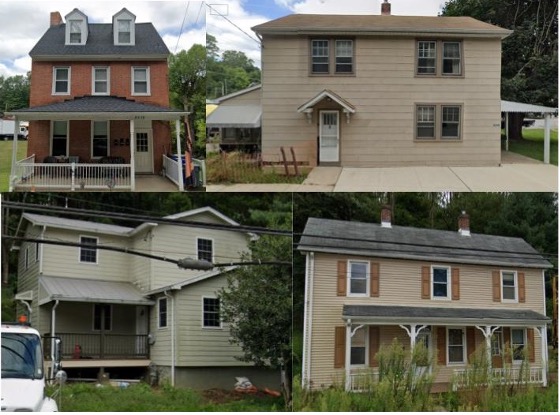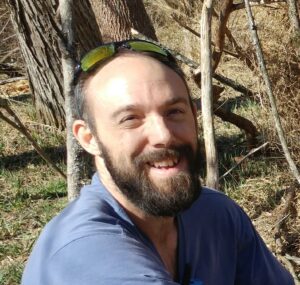Solicita ahora para formar parte de nuestra próxima grupo de Becados en Ciencia científicos comunitarios y líderes comunitarios.

Homes in the 8600 Main Street neighborhood of Historic Ellicott City, Maryland, many of which are immediately adjacent to the Hudson Branch tributary of the Patapsco River, are highly threatened by flooding and associated runoff pollution. These risks are exacerbated by the recent approach to flood management, which relies upon an 108” culvert, which is well past its lifespan, that intensifies the volume and flow rate of floodwater in the neighborhood. The county’s flood management strategies are currently being reevaluated but there is no indication that preservation of residents’ homes is a priority in this decision process. Community residents have identified many potential alternative approaches, including many nature-based strategies, to mitigate the flood risk using locally available resources. Our objective is to quantify the floodwater volume and velocity as well as water quality concerns associated with different flood management strategies and identify possible nature-based solutions that could be implemented on a local scale. This information would allow neighborhood residents to advocate, as well as seek funding and other support, for improved flood management approaches, which are deeply needed so that residents can remain in their homes and mitigate the risk of catastrophic flooding.
We are still open to the partnering with additional experts who may have something to contribute to our collaboration, so please get in touch if this describes you! In particular, we are seeking an expert who can contribute technical skills in stormwater modeling at a local scale. We are open to working remotely with scientists located anywhere in the USA or elsewhere.
The 8600 Main Street neighborhood is located in the West End Main Street community of Historic Ellicott City, Maryland, a historical mill town on the Patapsco River. The neighborhood borders the Hudson Branch tributary of the Patapsco, a short distance upstream from the downtown district. Though located in a wealthy county, the neighborhood faces the loss of generational wealth and heritage; it is threatened by gentrification and a growing risk of catastrophic flooding, and many heritage residences have been acquired by the county. There are around 60 homes in the West End of Main Street as well as other heritage communities along the periphery of Main St and local tributaries that are threatened by severe flash flooding.
The 8600 Main Street neighborhood is working with Thriving Earth Exchange to gather resources to enable efforts to protect and preserve the heritage community. They aim to move beyond a focus on rebuilding after flooding to a new framework of building long-term resilience. Residents are engaging with a wide range of resources to build resilience, and they hope that scientific data produced in partnership with Thriving Earth Exchange can galvanize and support their ongoing efforts to preserve their community.
For more information on the challenges facing Historic Ellicott City and their work to build resilience, you can view the following resources:
We aim to collect data to articulate multiple components of the flood risk threatening the 8600 Main Street neighborhood along the Hudson Branch:
The community hopes to make the results of this project available to relevant governing bodies and management agencies at the municipal, state, and/or federal level. Neighborhood residents also plan to use the results to inform their advocacy for effective flood risk solutions and in applications for funding and other external support to implement solutions. Flood risk mitigation strategies for the Hudson Branch are currently being reviewed as part of broader discussions of watershed management, so there is some urgency in obtaining data to inform residents’ participation in this decision process.
Project deliverables will likely include data reports and visualizations related to floodwater volume and velocity, water quality concerns, and the potential role of nature-based flood mitigation. These will be provided to community members and are intended to be used for communicating with municipal and state government entities in upcoming flood management decision processes.
A new flood management strategy is necessary for residents of the 8600 Main Street community to continue living in their neighborhood and avoid serious risk to their homes and lives. The data we plan to collect through this project are expected to significantly improve residents’ ability to participate in decisions about flood management in their neighborhood and to advocate for a new approach to flood management that mitigates the risk to their heritage community. They are eager to collaborate and share knowledge with the many communities across the country facing similar flood risks.
Residentes y científicos voluntarios colaboran en todos los continentes para aumentar la resistencia a las inundaciones
Ellicott City, Maryland, forma parte del área metropolitana de Baltimore, pero esta encantadora e histórica ciudad de molinos a orillas del río Patapsco puede parecer un paso atrás en el tiempo.
Por desgracia, casas que son un preciado legado de las raíces históricas de la ciudad se han visto gravemente dañadas por una serie de graves inundaciones en los últimos años. Estos barrios también están sufriendo la pérdida de riqueza generacional, la aceleración de la reurbanización y la tala de árboles. La pérdida de vegetación está desestabilizando las laderas de los ríos y aumentando la erosión, lo que hace que las inundaciones sean aún más dañinas.
Con todo en contra, los residentes luchan por salvar sus casas históricas. Ahora se unen a expertos en un proyecto de Thriving Earth Exchange proyecto para obtener los datos que necesitan para construir una comunidad más resistente.
Capacitar a la comunidad
Los residentes locales crearon una organización comunitaria llamada Soluciones para las inundaciones de Ellicott City en 2011, después de que una catastrófica inundación repentina destruyera casas, vehículos, patios y mucho más. La organización ganó aún más atención cuando se produjeron inundaciones igualmente destructivas en 2016, y de nuevo en 2018.
"Nos formamos para representar los intereses de la comunidad en los proyectos de gestión de aguas pluviales del condado y para ayudar a que éste se centre en soluciones contra las inundaciones para nuestros hogares, no sólo en intereses comerciales", explicó la cofundadora Gayle Killen. "Es importante para la comunidad que persistamos".
Los primeros pasos de la organización consistieron en reunir a la gente e informar a los miembros de la comunidad. Los fundadores del grupo fueron de puerta en puerta para hablar con los vecinos, organizaron cenas y picnics comunitarios, dirigieron los esfuerzos de recuperación tras las inundaciones y lanzaron un grupo de Facebook.
También abogaron por el cambio ante las autoridades locales. Aunque a veces fue una ardua batalla que enfrentó a los residentes con los funcionarios electos y los intereses empresariales, los líderes del grupo defendieron la mejora de las prácticas de gestión de las aguas pluviales en las reuniones de la junta del condado y en las audiencias sobre desarrollo.
En busca de la ciencia
Las voces de la comunidad son cruciales para iniciar un movimiento, pero los miembros de Ellicott City Flood Solutions se dieron cuenta de que su causa podría beneficiarse de algunos conocimientos científicos. Les apasionaba salvar su barrio, pero no eran hidrólogos, especialistas en control de la erosión ni cartografistas de inundaciones. Necesitaban científicos que pudieran unir los puntos y recopilar datos que convencieran a las autoridades locales de que el problema era realmente grave.
Fue entonces cuando el grupo se puso en contacto con Thriving Earth Exchange, dando inicio a una nueva colaboración que ya ha implicado a múltiples asociaciones y se ha extendido por todo un océano para ayudar a los residentes de Ellicott City a obtener las respuestas que necesitan.
A través de un contacto en la Alianza Antropocenosocio de Thriving Earth Exchange, los miembros de la comunidad se pusieron en contacto con Caitlin Mandeville, becaria de Thriving Earth Community Science y doctoranda en dinámica de la biodiversidad por la Universidad Noruega de Ciencia y Tecnología. Como gestora del proyecto, el papel de Mandeville es coordinar las actividades del proyecto y ayudar a identificar las necesidades de datos y los recursos potenciales para abordar las prioridades de la comunidad.
Crear una coalición
El primer paso fue incorporar hidrología, el clima y la infraestructura verde que pueden con precisión evaluar las condiciones existentes, predecir futuros modelos de inundación y rediseñar los planes de aguas pluviales. Marita Roos, arquitecta paisajista y planificadora local, se incorporó al proyecto a través de la Asociación Americana de Planificacióncomo nueva colaboradora de Thriving Earth Exchange. José Manuel Molina Tabares, hidrólogo e ingeniero de recursos hídricos especializado en adaptación climática, vive en Ellicott City. Un tercer experto colaborador, Pearce Wroe, ingeniero de recursos hídricos y experto en gestión de aguas pluviales, ya estaba trabajando con los residentes de Ellicott City para actualizar sus propiedades.
Mandeville afirma que las herramientas de colaboración virtual y la dedicación de los colaboradores locales le han permitido coordinar el proyecto a pesar de vivir a unos 5.000 kilómetros de distancia, en Noruega. "Por supuesto que me encantaría poder verlo todo allí con mis propios ojos", afirma. "Pero uno de los puntos fuertes del programa de Becas Científicas Comunitarias es cómo permite a todos los implicados aprovechar una amplia red de conocimientos y experiencia de gente situada en todo el mundo".
La coalición ya ha forjado un fuerte vínculo. Los socios científicos afirman que están asombrados por la energía y la defensa que han visto en los miembros de Ellicott City Flood Solutions, y que estarían perdidos sin esa experiencia "interna". El sentimiento es mutuo: Killen y sus cofundadores se sienten Killen y sus cofundadores se sienten afortunados de contar con el apoyo de los científicos y socios de Thriving Earth. Una noticia aún más positiva es que la coalición cuenta no sólo con el respaldo, sino con el apoyo entusiasta del equipo del Consejo del Condado del Distrito 1 de Howard. Ahora, el reto es seguir cobrando impulso, cuantificar el riesgo futuro de inundaciones y trabajar con los funcionarios locales en soluciones de resiliencia a largo plazo.
Pasos futuros
Enfrentarse a un problema complejo y sistémico como las inundaciones provocadas por las aguas pluviales es un reto enorme, y el proyecto de Ellicott City está en sus primeras fases. Sin embargo, este talentoso equipo ha tenido un comienzo asombroso. Mientras los científicos comienzan su trabajo inicial, los líderes comunitarios ultiman una encuesta para centrar la atención de los científicos y crean un recorrido a pie por el brazo Hudson del río Patapsco para llamar la atención sobre las zonas problemáticas.
Construir resiliencia requiere medidas de mitigación de riesgos transparentes e iterativas que hagan hincapié en las prioridades de la comunidad. Con dedicación y conocimientos científicos y comunitarios, esta notable coalición aspira a crear un futuro en el que las casas históricas de Ellicott City -y sus residentes- sean resilientes ante inundaciones catastróficas.

Gayle Killen has supported community recovery from runoff rapids since 2011, after witnessing devastation in her historic community first hand. She has since flood proofed her home through wet-proofing and rainscaping and works to help the remainder of the community become resilient as well. While not specifically “anti-development”, she recognizes the role that redevelopment plays in historic communities such as her own and strives to preserve as much as possible. Gayle is a certified Wildlife Habitat Naturalist and a Natural Building enthusiast. She has used native rain scapes to collect and manage runoff, reinforced the walls of her 1809 historic Icehouse with Hempcrete, and has installed a TESLA SolarRoof with Powerwall batteries to preserve her historic home located in a Chronic Disaster Zone.

Jose M Molina is a hydrologist, climate researcher and water resources engineer specializing in environmental time series analysis and forecasting, climate change modeling, stochastic simulation of hydrologic systems, and sustainable water solutions for international development. Research interests include but not limited to statistical downscaling incorporating large-scale climate variability, Earth science data products for hydroclimate extreme events analysis and prediction, climate-based risk assessment of food and water systems and irrigation and drainage infrastructure. Jose also volunteers in fog projects that provide clean and safe drinking water to rural communities in developing countries. In his free time, he loves riding his mountain bike in Patapsco, Maryland.

Marita Roos is a registered landscape architect and planner who writes, designs, plans, builds and teaches with the aim of enlarging our participation in the urban/natural environment. Marita is principal designer and planner with UrbanBiology LLC, focusing on planning for green infrastructure, parks and green streets, integrated with local goals for climate resilience, art and placemaking. Her recent work with the Neighborhood Design Center includes the Windom Road Green Street & Barrier Art project with the town of North Brentwood, and the Story of Water and Art with Joe’s Movement Emporium. She is currently working with NDC on designs for David C Driskell Park in Hyattsville, MD, honoring the life and work of a notable local Black artist.
Marita has worked and collaborated with numerous organizations throughout her career including Vita Nuova Inc, DC Clean Rivers, the City of San Antonio, Andropogon Associates and HNTB engineering. For one of her favorite projects, the 2008 Central Delaware River Waterfront Visioning Plan, she facilitated engagement activities with dockworkers, residents, property owners and advocacy groups to regenerate seven miles of Philadelphia shoreline as a living, diverse, environment. Marita holds an MSc in biodiversity management from the University of London Imperial College at Wye and an MLA in landscape architecture from the University of Georgia.

Pearce Wroe is a professional water resources engineer who has been practicing stormwater engineering since graduating with a B.S. in civil engineering from the University of Maryland, College Park in 2006. In 2020 he founded the Stormwater Shoppe, LLC to apply his engineering experience in a way that makes people happy about stormwater management. He is also currently a Stormwater Management Project Manager for the City of Gaithersburg, MD where he reviews land development plans and manages stormwater capital improvement projects. Prior to founding the Stormwater Shoppe, Pearce spent over a decade designing stormwater facilities and drainage systems of all shapes and sizes. His passion for a beautiful natural world through stormwater management guides his practice and sometimes annoys his friends and family who don’t feel quite as strongly about it.

Caitlin Mandeville is an ecologist and PhD candidate at the Norwegian University of Science and Technology in Trondheim, Norway. Her research focuses on conservation applications of biodiversity citizen science, touching on the topic from several perspectives including open data access, intersections between citizen science and outdoor recreation, and the role of citizen science in protected areas. Before her current work, she earned a B.Sc. from the University of Wisconsin-Madison, explored ecosystems around the US through seasonal fieldwork and environmental education positions, earned a M.Sc. from the University of Wyoming researching the impact of temperature regulations on freshwater stream fish, and spent two years coordinating community science programming with New Hampshire Sea Grant. She is passionate about working directly with communities on conservation.
 Anthropocene Alliance Partner
Anthropocene Alliance PartnerAlexis Hidalgo is the Program Manager for Anthropocene Alliance, the nation’s largest coalition of frontline communities fighting for climate and environmental justice, of which the Historic Ellicott City Flood Solutions is a part of. She hopes to continue supporting in any way possible the incredible work that Gayle is doing to merge science and advocacy in her community.
(c) 2024 Thriving Earth Exchange